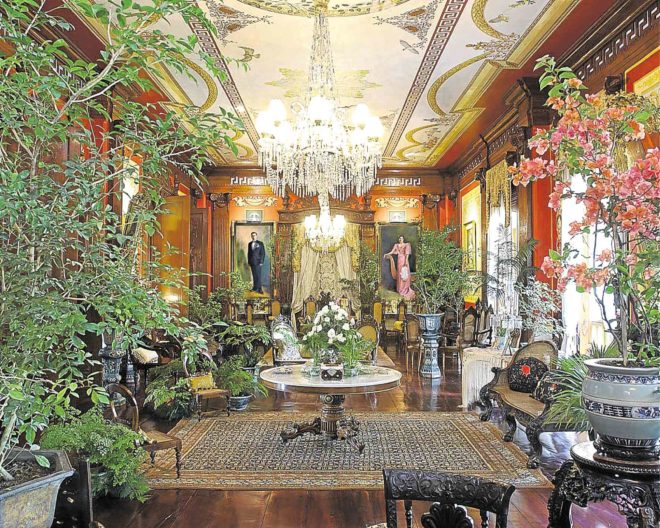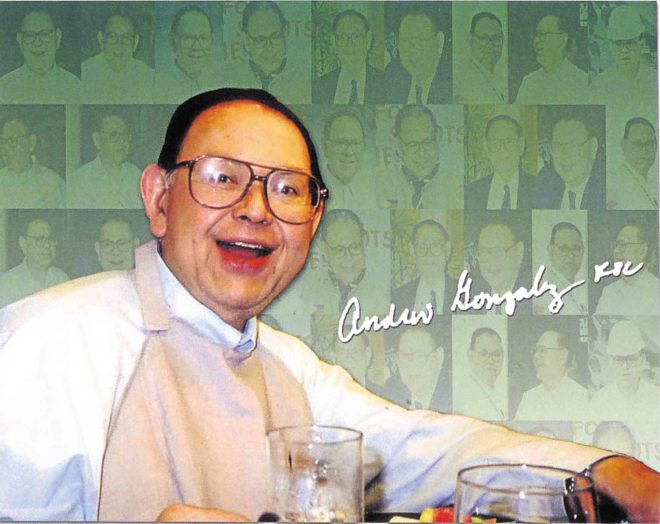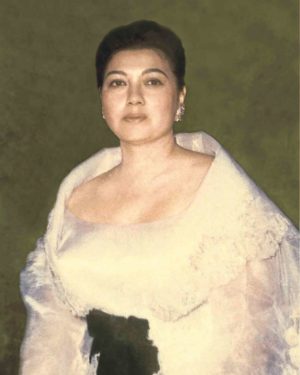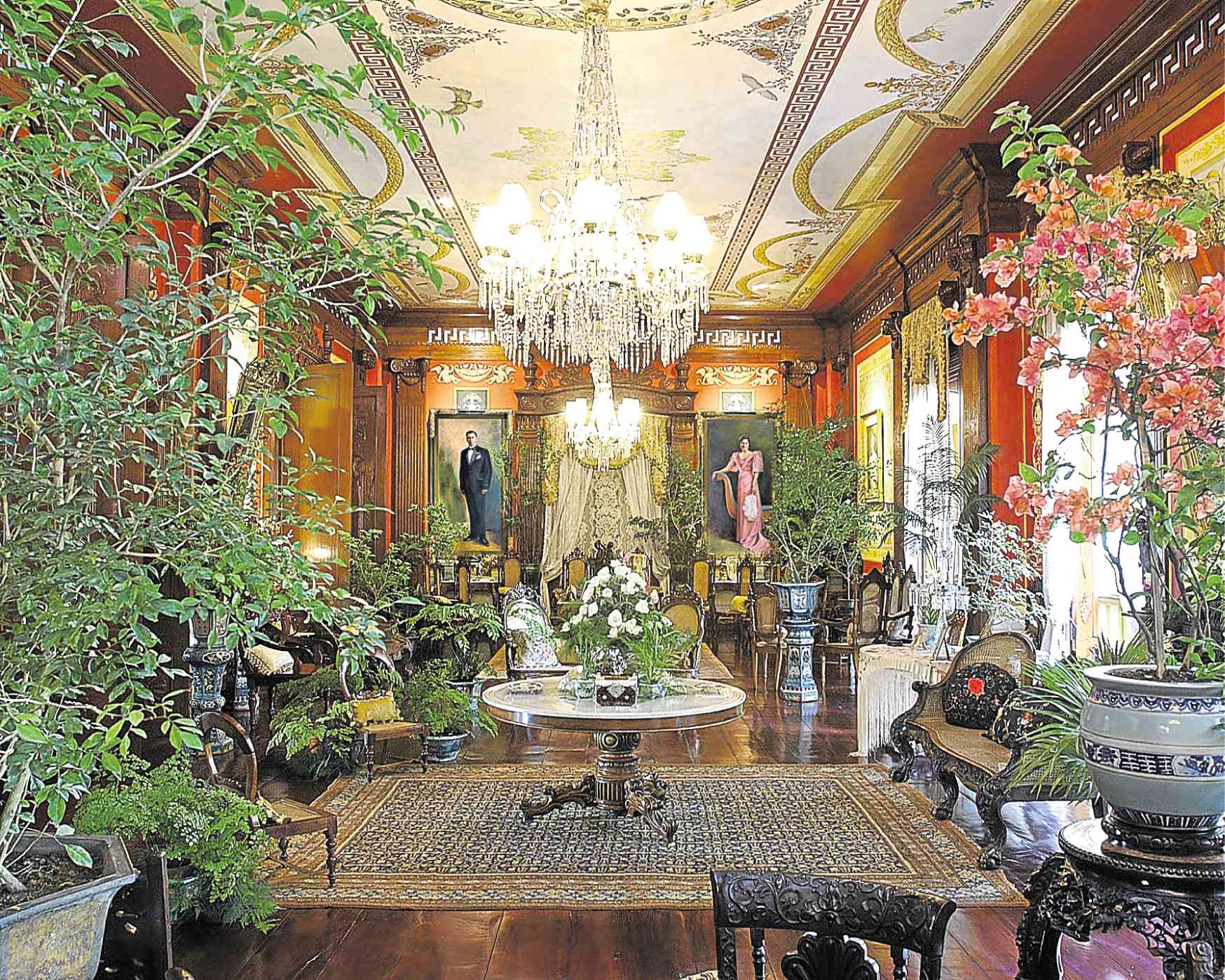
Last of two parts
The first part, “Looking back on our ‘bahay na bato’ in Nick Joaquin’s ‘Portrait of the Artist,’” was published on April 1, 2018.
My first meeting with Ramon N. Villegas, historian and antiquaire, and Doña Marie Theresa Lammoglia de Virata, happened simultaneously, and in a very awkward manner.
In a symposium of the Oriental Ceramics Society in the early 1980s, during Villegas’s lecture, Mrs. Virata, fondly called “Tita Bebe,” stopped him in mid-lecture and proceeded to point out certain errors.
Villegas, our dear friend (he died Aug. 11, 2017), did not take to me immediately. It was in an Antique Dealers Association of the Philippines (ADAP) exhibit, when I escorted Fe Panlilio, that it must have finally dawned on him that I was for real. Through him, I would meet Dr. Eleuterio “Teyet” Pascual, another much-missed friend, always in his element where controversy reigned.
The three of us would patrol the Bangkal area in Evangelista Street, Makati, looking for treasures in the junk heap.
An enlightening visit to the Museo ng Buhay Pilipino, the early lifestyle museum in the Philippines which housed the D. M. Guevara Collection, first located in the vacation house of former Governor General Leonard Wood, deepened my love for Filipiniana antique collecting.

Lovingly acquired by the Guevara matriarch, Carmen San Buenaventura Guevara, the collection featured the “Ilustrado lifestyle” of lowland Christian Filipinos, expertly curated by David Baradas.
Unfortunately or fortunately, the Guevara collection never had a permanent home. The next location, at the Central Bank Quezon City, was but a bodega.
Its third home, the Vigan House in Nayong Pilipino, was almost permanent, until the Nayong Pilipino was demolished to make way for the expansion of the Ninoy Aquino International Airport runway.
Proud acquisition
Its final and true house became the Museo De La Salle at De la Salle University (DLSU) Dasmariñas, Cavite. I am very proud of this acquisition during my tenure as executive director.
The Guevaras, whose mother and daughters are all Theresians, from St. Theresa’s College in San Marcelino and then Quezon City, were clients of the Panlilio jewelers, specifically my lola Lucing Panlilio, and I remember how I used to drool at seeing the collection in its original location.
Aside from the beautiful bahay na bato of Bacolor, Pampanga, and Biñan, Laguna, many memorable houses around the country opened their doors to me. These included the Lacson-Claparols house in Talisay, Negros Occidental, ancestral home of Tony Claparols, husband of my aunt Vicky Panlilio; the Singian-Lazatin house in San Fernando, Pampanga, where the tradition of excellent Pampango cuisine is still observed; the Gaston mansion in Hacienda Rosalia, Negros Occidental, where Peque Gallaga’s opus, “Oro, Plata, Mata,” was filmed; the most beautiful, for me, the former Archbishop’s Villa in Barrio San Vicente, Vigan, Ilocos Sur.
In 1992, on the invitation of Dr. Nicanor G. Tiongson, then vice president and artistic director of the Cultural Center of the Philippines (CCP), I became the historical consultant for the 13-part TV series of the Rizal novel, “Noli Me Tangere.”
Produced by the CCP, with the Philippine Educational Theater Association (Peta), I worked with three National Artists—Eddie Romero for film, Rolando Tinio for theater, and Ishmael Bernal for cinema.
The shoot took place in Vigan for four months in the summer of 1992. The earlier film version by National Artist for Film, Gerry de Leon, was shot in 1961, entirely in Bacolor, Pampanga, mostly in the Panlilio ancestral house.


My earliest memories of Bro. Andrew Arnedo Gonzalez, FSC, were the visiting days granted the La Salle Brothers’ families on Saturdays in the late 1960s. An uncle on the Panlilio side had joined the community and relatives were allowed to bring food and drinks.
I remember that, though our tables were laden with food, the Gonzalez table was the one that was truly impressive—Doña Rosario Arnedo Gonzalez would bring a feast for the entire community.
Our families, the Panlilios and the Gonzalezes, both hailing from Pampanga, had known each other for generations. In our adult years, our paths would cross again when Brother Andrew’s nephew, Toto Gonzalez, became an esteemed friend and one of the consultants of Museo De La Salle.
I had the privilege and the honor to be invited, apart from his immediate family, to join Brother Andrew at Sunday lunches, Christmas, New Year and his birthday for the last 20 years.
Over food, wine and dessert, he would discourse on anything and everything—a true Renaissance man.
It was during these Sunday lunches that the idea of a Museo De La Salle was conceived. Lahar had destroyed Bacolor during the Mt. Pinatubo eruption in 1990. Brother Andrew offered to build a museum on the grounds of DLSU-Dasmariñas, Cavite, to house whatever remained of the Panlilio and Gonzalez heirlooms.
Incredulous
Being 32 at that time, I was incredulous at his specification that it be a museum with a total floor area of 1,500 square meters.
Don’t worry, he said, it would be such a success, and in five years, it would be filled to the rafters. And that was exactly what happened.
His mission-vision statement for the museum said it so well: to provide a usable past for the Filipinos and to provide the stimulus for an academic environment that would make the De La Salle student proud of his heritage and proud of his nation’s past, so as to build its future.
The Museo De La Salle today stands as one of Bro. Andew Gonzalez’s sterling accomplishments. It’s a museum first and foremost that took inspiration from Filipino bahay na bato architecture and interior design.
The best and the brightest minds were invited and consulted for the project since its inception: architect Oscar Mapua Jr., anthropologist and historian Dr. Fernando Nakpil Zialcita and heritage architect Augusto Villalon.
The Museo De La Salle drew architectural inspiration from three landmark Filipino bahay na bato: the Constantino house in Balagtas, Bulacan; the Sioco-Arnedo house in Bo. Sulipan, Apalit, Pampanga; and the Santos Joven-Panlilio house in Bacolor, Pampanga.
Among the first major donors of the Museo De La Salle was the late collector, Bebe Virata, widow of the late Development Bank of the Philippines chair Leonides Virata, who saw the potential of the Museo early on. The next big windfall was the donation of the D.M. Guevara collections.
Among the Museo’s significant donors were the Philippines’ top collectors: Paulino and Hetty Que; the widow of the late Education Secretary Armand Fabella; Marinella Katigbak Fabella; daughter of the late senator Maria Kalaw Katigbak, who has a Museo Room named in her honor.
Looking back after 17 years, and as its first executive director, I ran the Museo De La Salle with passion and dedication, implementing three important disciplines—common sense, intelligence, and having very deep pockets.
Only when a family has suffered land reform during the martial law years, and a natural calamity like the Mt. Pinatubo eruption, could one be truly detached.
As I leave the Museo De La Salle with head held high, I have 0nly three wishes: a competent, qualified executive director and staff who will understand and implement the Museo’s mission and vision; a truly dedicated and committed Museo board of trustees and board chair who will raise the money needed for an endowment fund; and an enlightened head of DLSU-Dasmariñas committed to support, understand and appreciate the Museo De La Salle.
Today, the Museo remains the best lifestyle museum in the Philippines, and one of the finest in Asia. It is a worthy repository of what the Filipino can do, a legacy for future Filipinos to appreciate, enjoy and be very proud of. St. John Baptist de la Salle, pray for us, leave Jesus in our hearts, forever. —CONTRIBUTED









































